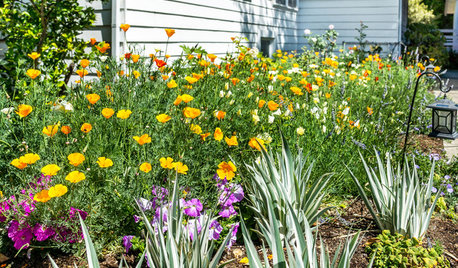Ficus Elastica soil, watering, separating question
zneilson
12 years ago
Related Stories

GARDENING GUIDESHow to Pick a Mulch — and Why Your Soil Wants It
There's more to topdressing than shredded wood. Learn about mulch types, costs and design considerations here
Full Story
GARDENING GUIDESHouzz TV: Make a Worm Bin for Rich Soil and Happy Plants
A worm-powered compost bin that can fit under a sink turns food scraps into a powerful amendment for your garden. Here’s how to make one
Full Story
CONTAINER GARDENSContainer Garden Basics: How and When to Water Potted Plants
Confused about soil moisture, the best time to water and what watering device to use? This guide can help
Full Story
SAVING WATER11 Ways to Save Water at Home
Whether you live in a drought-stricken area or just want to help preserve a precious resource, here are things you can do to use less water
Full Story
GARDENING GUIDESEssential Watering Tips for Your Edible Garden
To give your edible plants just what they need, check out these guidelines for how, when and how much to water
Full Story
GREEN BUILDINGWater Sense for Big Savings
Keep dollars in your pocket and preserve a precious resource with these easy DIY strategies
Full Story
LANDSCAPE DESIGN10 Ideas for a Creative, Water-Conscious Yard
Check out these tips for a great-looking outdoor area that needs less water
Full Story
LIFEThe Top 5 Ways to Save Water at Home
Get on the fast track to preserving a valuable resource and saving money too with these smart, effective strategies
Full Story
HEALTHY HOMEGet the Lead Out: Lead Safety at Home
Keep your family safe by properly testing for and dealing with lead in old painted surfaces, water and soil
Full Story
SAVING WATER6 Reasons Why You Should Save Your Rainwater Now
Collect and store during the rainy season so you’ll have water ready for irrigation when you need it
Full StoryMore Discussions








birdsnblooms
zneilsonOriginal Author
Related Professionals
Camas Landscape Architects & Landscape Designers · Eden Prairie Landscape Architects & Landscape Designers · Foothill Ranch Landscape Architects & Landscape Designers · Forest Acres Landscape Architects & Landscape Designers · Glen Ellyn Landscape Architects & Landscape Designers · Suffern Landscape Architects & Landscape Designers · El Mirage Landscape Contractors · Fountain Valley Landscape Contractors · Hoffman Estates Landscape Contractors · Middleton Landscape Contractors · Pueblo West Landscape Contractors · The Villages Landscape Contractors · Vineyard Landscape Contractors · North Hills Landscape Contractors · Liberty Township Interior Designers & Decoratorsbirdsnblooms
pirate_girl
tapla (mid-Michigan, USDA z5b-6a)
zneilsonOriginal Author
tapla (mid-Michigan, USDA z5b-6a)